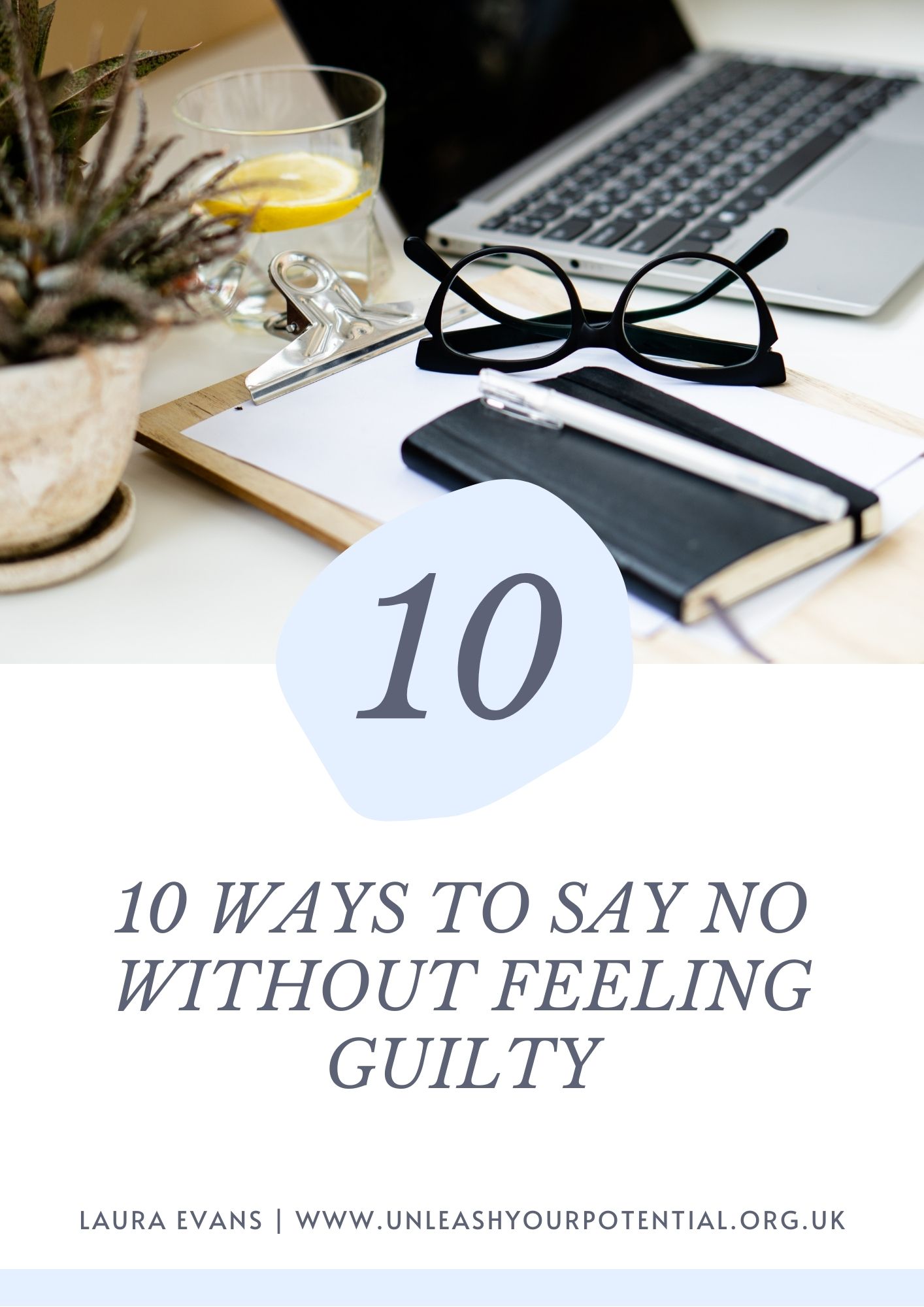Many people find themselves automatically saying ‘yes’, when inside their head they really want to say ‘no!’ Someone asks, ‘can you help me out with this deadline?’ or ‘can you give me a lift?’ or ‘can you have the kids?’ Saying ‘yes’ when you mean ‘no’ can leave you frustrated, tired and worn out …. if that’s you read on ….
Not being able to say ‘No’ impacts on you, here’s how ….

We run 10-20 thousand automatic strategies or programmes in our mind every day, most of which we’re consciously unaware of. One of the challenges with having an automatic strategy of ‘Yes’ when people make requests of you is you end up with a lack of ‘me time’ – you end up running a programme called ‘sacrifice self for the benefit of others’. This means you end up being at the bottom of the list, likely overwhelmed as your own to do list mounts up, or you end up resenting the person you said ‘yes’ to. Some people say ‘yes’ because they feel guilty for saying ‘no’ or don’t want to disappoint others – but do we stop you think if the other person feels guilty for making the request of us in the first place? Have they just got into the habit of expecting you to help? Have you stopped to question if they really need your help? Are they being lazy? Looking to save money at your expense?
It’s actually surprising how people react when you start saying ‘no’ …
A recent delegate on the NLP Practitioner course struggled to say ‘no’. Her family were always asking her to run errands and baby sit the children, and she had a pattern of always saying ‘yes’, although deep down she really didn’t want to. She was worried what they’d think of her if she said no. She worked on her self-worth during the week and her confidence too. When next asked to baby sit, she said ‘no’ to her family. She couldn’t believe how receptive they were – they responded with “oh, okay, no problem”. She was speechless! She used a tactic from the list below and they respected the fact that she was exhausted. Replying: ‘we’ll go out another time’ and the conversation turned from understanding to supporting her.
The key was finding a way to say ‘no’ in a way she was comfortable with. It’s a real skill AND one worth learning if you say ‘yes’ too much!
2 top tips to make saying ‘No!’ much easier ….
- Plan
When you want to start saying ‘no’ more often, you need to have a plan and to have thought through the different ways you can say ‘no’. I get that just saying ‘no’ may seem harsh and rude to some people, so it’s important you mentally prepare for it with different phrases making it less likely you’ll default to ‘yes’. You’re putting plans in place just by reading this blog!
- Personal Boundaries
Start thinking now about what your boundaries are. What do you feel comfortable saying ‘Yes’ to and how frequently so that it doesn’t adversely impact on you. I’m not proposing you say ‘No’ to everyone all the time, but consider what will work for you to limit the negative impacts I described earlier.
3 ways to say ‘no’ …. Let’s practice!
- Just say ‘No’ ….
Just say no. Sometimes some people just need to be told no. ‘Laura, can you help me on this deadline because it’s really important?’ …. ‘I’m afraid I can’t, no’. Be confident in your delivery and firm. Avoid the common pitfall of then going on to apologise for saying ‘no’ or giving a long explanation about why. Just say ‘no’. If you must say sorry, then say it first … ‘I’m really sorry, but I can’t’.
- A softer ‘No’ …
They ask “Laura, can you help me?”…. “I can’t right now” …. It’s a delay tactic, you’re not saying no forever, just not now. A longer version might be: “Yes, but I can’t until next month when my work load’s a bit lighter”. Notice how that feels a little bit softer. Another option: ‘I’d love to, now’s really busy for me and I don’t really have capacity but if you’re still looking for someone in a couple of weeks’ time, then by all means give me a bell’. Another option: ‘sorry, not on this occasion’ or ‘I’m really sorry. I’m sure there’s somebody that will be able to help you, but I’m afraid I can’t on this occasion’.
- An even softer ‘No’ ….
“I’ll think about it”. You have to be mindful you’re not closing the door on it and they may well come back to ask again – what you are saying is I’m not prepared to make a decision right now. Another option: ‘Leave it with me, I’ll have a think about it’.
Sometimes people won’t take no as an answer – here’s how to handle that scenario, elegantly!
This is where the ‘agreement frame’ which we teach on our NLP Practitioner course comes in. The agreement frame is a way of elegantly disagreeing with someone. What you do is start the sentence by saying ‘I respect …’ or ‘I agree …’ or ‘I appreciate …’. Then you insert what they’ve said (using their words so they know you’ve heard them) and then you restate your position.
Let’s run a scenario:
“Laura, can you have the children?”…. “I’m really sorry. I’m absolutely exhausted, I can’t right now.” …. “but Laura, I booked a table for dinner and I need to go out and see my friends.” …. “I appreciate that you’ve booked a table and I’m really exhausted and now’s not the right time for me to be able to do that. I’m really sorry. I can’t.”
The agreement frame is really useful and works well. It’s a very elegant way of disagreeing. You let them know you’ve heard them because you repeat back their words and you restate exactly what you said or a version of it. You are reinforcing your position. People will respect you for that rather than just kind of squirming on the spot and not giving a definite answer.
Now go forward and practice saying ‘no’, rather than suffering saying yes!
Good Luck and let me know how you get on.
Recent Posts
Redundancy: 6 top tips for anyone impacted by redundancy
One thing you can guarantee with the world of business is that it's constantly changing. Whether it's mergers and acquisitions, downsizing, rationalisation, selling part or whole business units - big business is always changing it's organisational structures, looking...
Elevating Executive Coaching: 10 Research-Backed Reasons to Pursue an NLP Certification
In today's rapidly evolving business landscape, executive coaches play a crucial role in helping leaders unlock their full potential and drive organisational success. While executive coaching alone can be highly effective, combining it with Neuro-Linguistic...
Unlocking Leadership Excellence: 10 Reasons Why Every Leader Should Attend an NLP Course
Attending a Neuro-Linguistic Programming (NLP) course can be highly beneficial for leaders in various fields. To thrive in today's rapidly changing and competitive landscape, leaders must possess a diverse set of abilities to effectively navigate challenges and...






